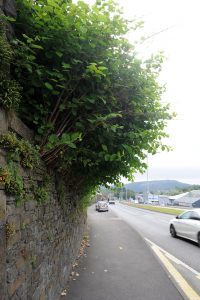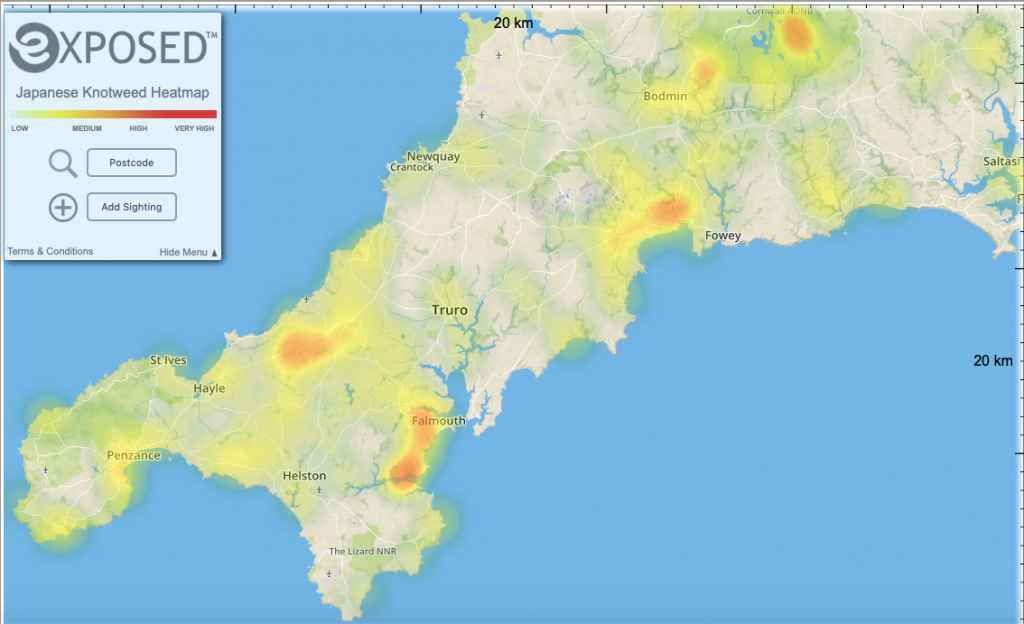 Japanese knotweed is the problem that just keeps on growing. Described by the Environment Agency as “indisputably the UK’s most aggressive, destructive and invasive plant”, it’s now thought to affect 4- 5% of homes in the UK and the most conservative estimates put the cost of treatment at around £166 million each year.
Japanese knotweed is the problem that just keeps on growing. Described by the Environment Agency as “indisputably the UK’s most aggressive, destructive and invasive plant”, it’s now thought to affect 4- 5% of homes in the UK and the most conservative estimates put the cost of treatment at around £166 million each year.
As people become more informed about the risks associated with knotweed and its impact on property values, they are becoming bolder in pursuing encroachment cases through the courts. The growing number of successful legal cases in recent years relating to Japanese knotweed encroachment has sounded the alarm for those who fail to act to prevent the plant from spreading. They may find they are required to not only pay for treatment and legal expenses, but also to compensate the victim of encroachment for any diminution in the value of their home.
Local councils are at the coal face of the battle and can find themselves on both sides of the fence: simultaneously at risk of legal action as a landowner if knotweed on public land is left untreated, while also using Community Protection Notices and ASBO legislation to aid homeowners who are themselves victims of encroachment and who may find themselves unable to sell their property as a result.
A high-profile case in February 2017 saw two neighbouring homeowners successfully sue Network Rail for allowing Japanese knotweed to encroach onto their land, winning compensation for the cost of treatment as well as diminution of the value of their homes. Network Rail’s appeal in 2018 was quashed by the Court of Appeal. Also in 2018, in the first claim against a private homeowner heard in an open court, a couple in Cornwall successfully sued their neighbour for allowing knotweed to encroach onto their land.
The vast majority of homeowners see their local council as being the first port of call in a row over Japanese knotweed encroachment. A survey carried out in 2019 by Environet UK and YouGov found that 42% of homeowners would contact their local council in the first instance if knotweed was at risk of encroaching onto their property.
This faith in the ability of local councils to help deal with the problem could be a result of a Bristol City Council’s successful use of ASBO legislation in December 2018 to prosecute a land owner who allowed Japanese knotweed to encroach into the gardens of seven neighbouring homes.They issued a CPN to the land owner who had failed to act to prevent the spread of the plant, then prosecuted them using ASBO legislation.
Whilst this blunt instrument should force action, it does not provide the affected homeowner any compensation for their losses, where a claim in civil nuisance would.
Awareness among the general public is growing, with 78% of UK adults now aware of the plant according to the latest research. Infestations are considerably easier and cheaper to treat if they are discovered early before they have a chance to take hold and spread, so vigilance by local residents is vital. A recent report by the Environmental Audit Committee called for a “citizen’s army of volunteers” to spot and stop invasive species before they become established, highlighting how people power can be harnessed to assist in the fight against Invasive Non-Native Species (INNS).
Local authorities keen to get on top of the problem have an opportunity to capitalise on this growing awareness and use it to help them build a local picture of the Japanese knotweed landscape using a new online heatmap, ‘Exposed’, that has been developed by Environet UK. Available for free to councils to host on their websites, the interactive tool could be of considerable benefit in the fight against knotweed, tracking infestations in the local area and encouraging the engagement of the local community in spotting and reporting new sightings.
Launched in early 2019 and already populated with thousands of infestations across the UK, Exposed is designed to build a local and national picture of the Japanese knotweed problem, with hotspots clearly marked in yellow and red. Users can enter their postcode to discover the number of known incidences of knotweed within a 4km radius of that location.
In addition to checking for sightings near where they live, the general public is encouraged to help populate the heatmap using the ‘Add Sighting’ feature and attaching a photograph of the plant so it can be verified by experts at Environet. Particular hotspots around the UK include Bolton, Bristol, South Wales and London, all of which are home to hundreds of infestations, but there are now very few parts of the UK which are completely untouched by Japanese knotweed.
As well as understanding the extent of the problem in their borough and creating a sense of collective responsibility, Exposed will also assist councils in their efforts to protect council-owned property and land that may be affected by Japanese knotweed, enabling them to act earlier to treat it before it becomes well established and more challenging to tackle.
Nic Seal said, “Local Authorities have a huge role to play in the fight against invasive plants, particularly Japanese knotweed which can cause significant damage to property and its value if left untreated.
“By adding Exposed to their armory, they can build awareness of Japanese knotweed in their local area and encourage people to be proactive in spotting and stopping the spread of the plant, potentially savings hundreds of thousands of pounds every year.”
Exposed is available free of charge to Local Authorities, including Borough and County Councils and there is no obligation to use Environet UK for treatment services. Interested parties should contact Environet UK for an iframe code by calling 01932 868 700 or emailing nic.seal@environetuk.com







Recent Comments